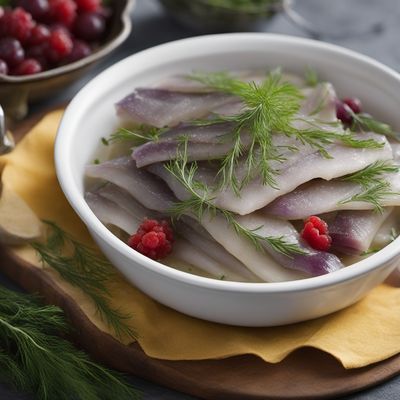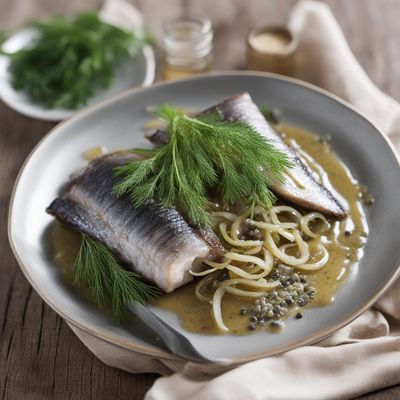
Dish
Glasmästarsill
Glasmästarsill is made by first cleaning and filleting the herring. The fillets are then placed in a jar and covered with a mixture of vinegar, sugar, and spices. The jar is then sealed and left to marinate for several days. The dish is typically served cold and can be enjoyed on its own or with bread and butter. Glasmästarsill is a good source of protein and omega-3 fatty acids.
Origins and history
Glasmästarsill has been a part of Swedish cuisine for centuries and is believed to have originated in the 16th century. The dish was originally made by glassblowers who would pickle herring in jars that had been used to store glass. The name "Glasmästarsill" translates to "glassblower's herring" in English.
Dietary considerations
Glasmästarsill is not suitable for individuals who are allergic to fish or have a sensitivity to vinegar. It is also high in sodium and should be consumed in moderation by individuals with high blood pressure.
Variations
There are many variations of Glasmästarsill that can be found throughout Sweden. Some recipes call for the addition of mustard or dill, while others use different types of vinegar or sugar. Some recipes also call for the addition of onions or other vegetables.
Presentation and garnishing
Glasmästarsill is typically served in a glass jar or on a platter. It is often garnished with fresh herbs or sliced onions.
Tips & Tricks
To enhance the flavor of Glasmästarsill, it is recommended to let it marinate for at least 24 hours before serving.
Side-dishes
Glasmästarsill is typically served with boiled potatoes, crispbread, and butter. It can also be served with a side of pickled vegetables such as beets or cucumbers.
Drink pairings
Glasmästarsill pairs well with aquavit, a traditional Scandinavian spirit that is typically served chilled.
Delicious Glasmästarsill recipes
More dishes from this category... Browse all »

Acar kuning
Malaysian cuisine

Atchara
Filipino cuisine

Baechu-kimchi
Korean cuisine

Baek kimchi
Korean cuisine

Beet Eggs
Jewish cuisine

Burong mangga
Filipino cuisine

Chilera
Ecuadorian cuisine

Chinese Pickles
Chinese cuisine





